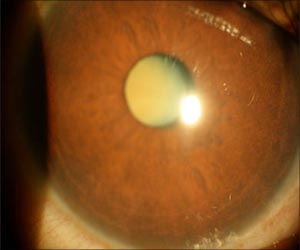Discover how COVID-19 impacts the brain, with a focus on Vasomotor Reactivity. The research presents a novel insight into cerebral hemodynamics amid the pandemic.
- Vasomotor Reactivity (VMR) could be a key indicator of endothelial function in COVID-19 patients, potentially enabling early identification of chronic endothelial dysfunction
- Research shows that SARS-CoV-2 can cause apoptosis in endothelial cells, leading to increased vascular permeability, altered cell junctions, and eventually, cell detachment
- Functional MRIs and the breath-holding test (BHT) can aid in evaluating the autonomic nervous system's response during voluntary breath retention, providing crucial insights into VMR and cerebrovascular reactivity
Cerebral Vasomotor Reactivity in COVID-19: A Narrative Review
Go to source).
Neurological Implications of COVID-19: The Key Role of the Endothelium
Although the respiratory system is the major target, severe acute respiratory syndrome coronavirus 2 (SARS-CoV-2) infection also harms the cerebrovascular and neurological systems. The neurological manifestations of acute COVID-19 are poorly understood; however, studies have linked them to a variety of mechanisms, including direct viral neuroinvasion, epitheliopathy that compromises the blood-brain barrier, coagulopathies that cause hypoxic-ischemic neuronal damage, activation of oxidative stress cascades, cellular apoptosis, and metabolic imbalances.The primary target location of SARS-CoV-2 infection termed the Achilles heel in COVID-19 patients, is the endothelium, from which it spreads. Endothelial cell damage causes the production of chemicals that cause blood vessel contraction or relaxation, resulting in cerebral hemodynamic VMR.
SARS-CoV-2 Interaction with Endothelial Cells and its Implications
SARS-CoV-2 appears to obtain access to neuronal, glial, and endothelial cells expressing angiotensin-converting enzyme 2 (ACE2) receptors via its spike (S) glycoprotein. Even though it is poorly understood, SARS-CoV-2 selectively targets endothelium cells, causing apoptosis. It also raises cytokine levels within these cells, which leads to increased vascular permeability, altered cell junctions, and overall endothelial function, eventually leading to cell detachment.According to recent research, adherent and detached endothelium cells enter the bloodstream and become procoagulants. Uncontrolled and widespread intravascular coagulation causes a prothrombotic state, also known as hypercoagulation; occluding cerebral (or brain) blood arteries can cause significant brain injury.
Endothelial cells release nitric oxide (NO), a relaxing agent that reduces platelet aggregation and suppresses the production of cell adhesion molecules (CAMs) on endothelial cell surfaces, limiting white blood cell (WBC) penetration. Although blood coagulation and inflammation are protective, decreasing NO generation negates these effects.
Overall, the vascular phase of hemostasis is initiated by a damaged endothelial barrier. The breath-holding test (BHT) in general demonstrates the ability to regulate breathing and metabolism. BHT, on the other hand, as a VMR assessment tool, aids in evaluating the autonomic nervous system's response during voluntary breath retention. As a result, VMR is an important indicator of endothelial function. It measures how strongly cerebral arteries constrict or dilate in response to variations in CO2 levels and restricted blood flow in the brain. Its evaluation could provide a beneficial early look at chronic endothelial dysfunction in groups at high risk of developing long-COVID-19.
Cerebrovascular reactivity (CVR) is the ability of cerebral arteries to dilate or constrict in response to changes in the microenvironment, for example, increased arterial pCO2 and decreased pH increase cerebral blood flow (CBF). CVR varies with time in COVID-19 patients with various clinical neurologic symptoms, implying that it may be a biomarker for disease progression. A positron emission tomography (PET) scan is the current gold standard for CVR evaluations because it directly evaluates CBF. However, transcranial Doppler sonography (TCD) and magnetic resonance imaging (MRI) are also routinely used by researchers for the same purpose.
Key Indicators of Endothelial Function in COVID-19
The team found seven studies that examined VMR and pulsing index (PI) in COVID-19 patients after searching PubMed, Google Scholar, and EMBASE from the beginning until May 19, 2023. The other six studies, except Callen et al., used TCD to assess cerebral hemodynamic alterations or VMR deficits in COVID-19 patients.Marcic et al. compared cerebral hemodynamics and the breath-holding index (BHI) in 25 mildly unwell COVID-19 patients suffering neurological symptoms 40 days after recovery to 25 healthy controls in research. The BHI was significantly lower in the patients, indicating decreased VMR.
Marcic et al. also did a cross-sectional study comparing 49 COVID-19 patients with mild neurological symptoms 300 days after disease onset to 50 age and gender-matched controls. They discovered a statistically significant decrease in BHI among patients vs. controls, showing that COVID-19 causes chronic endothelial dysfunction.
These findings show that VMR assessments using TCD are superior to MRI-based approaches, which are inaccessible or difficult to repeat and may provide early signals of chronic endothelial dysfunctions or cerebrovascular illnesses in a population at high risk of long-term COVID.
To recapitulate, even little alterations in cerebral hemodynamics can cause a variety of serious health issues. As a result, research into the involvement of VMR in COVID-19 and other viral infections should be prioritized. According to the current study findings, impaired VMR in COVID-19 patients could be an early indicator of a higher risk of severe disease and poor outcomes.
Reference:
- Cerebral Vasomotor Reactivity in COVID-19: A Narrative Review - (https://www.mdpi.com/2075-1729/13/7/1614)














